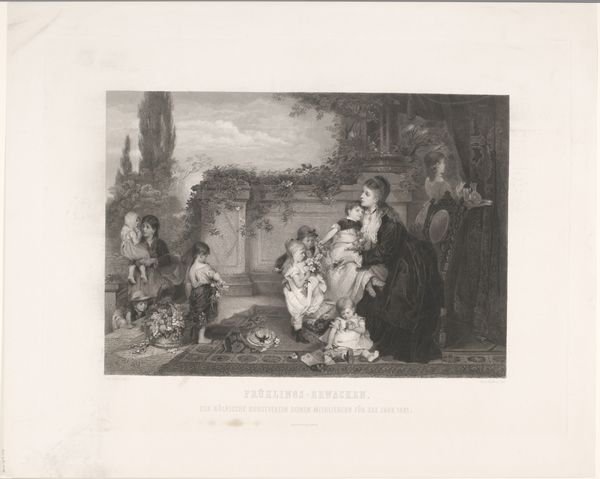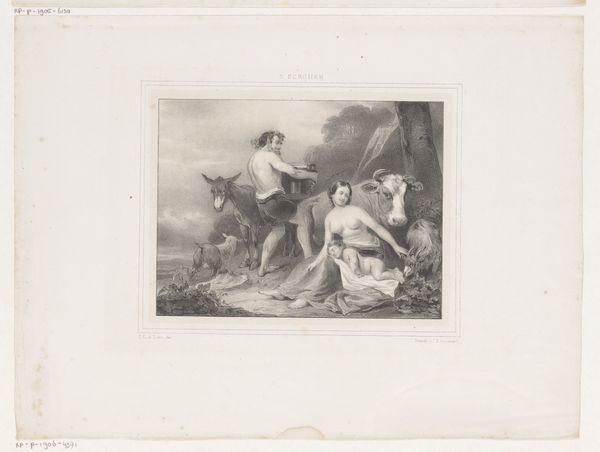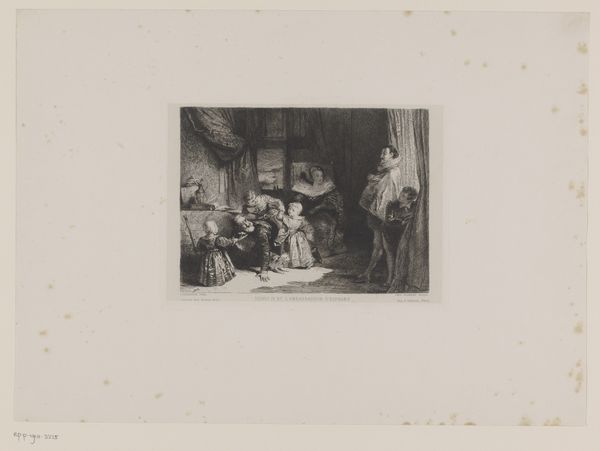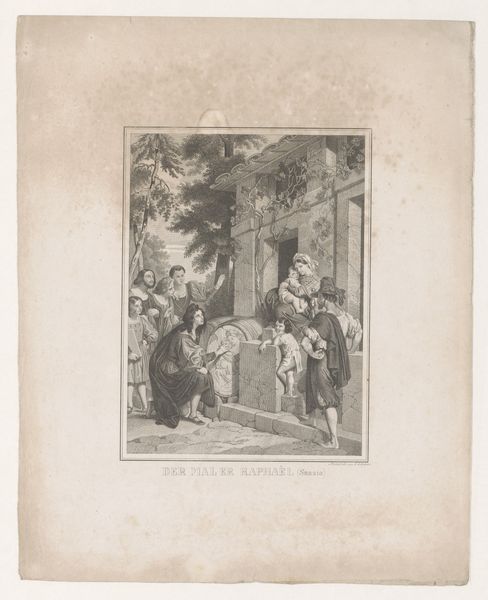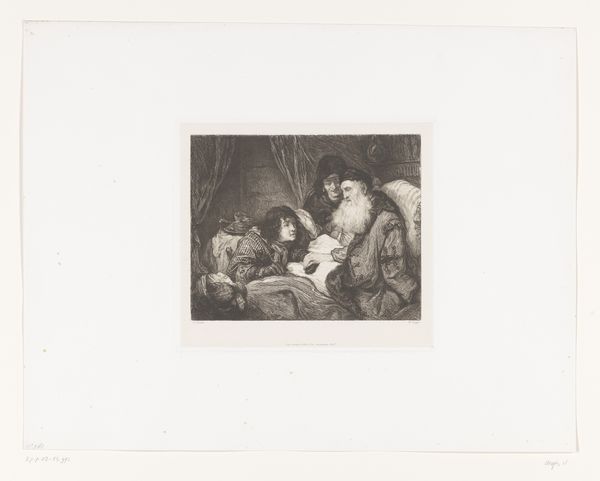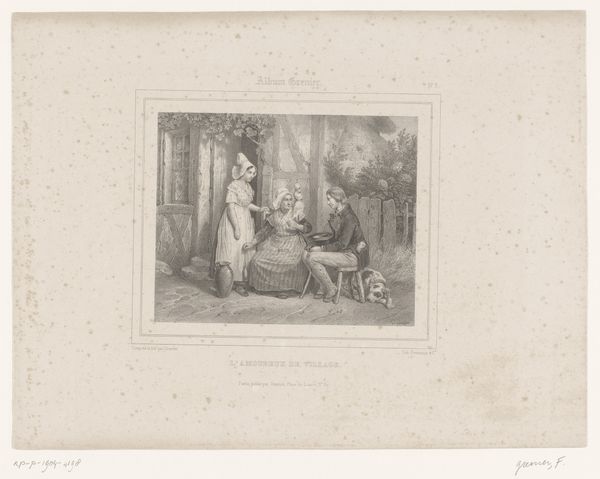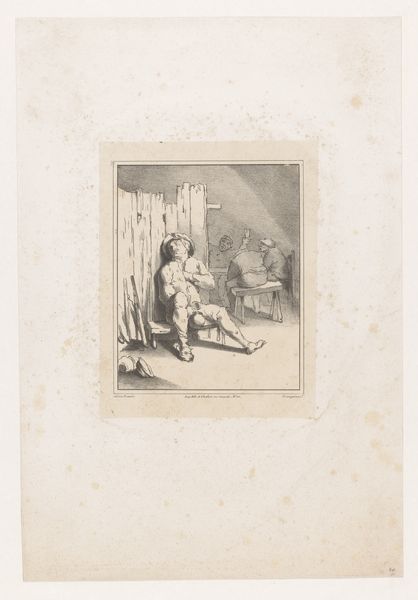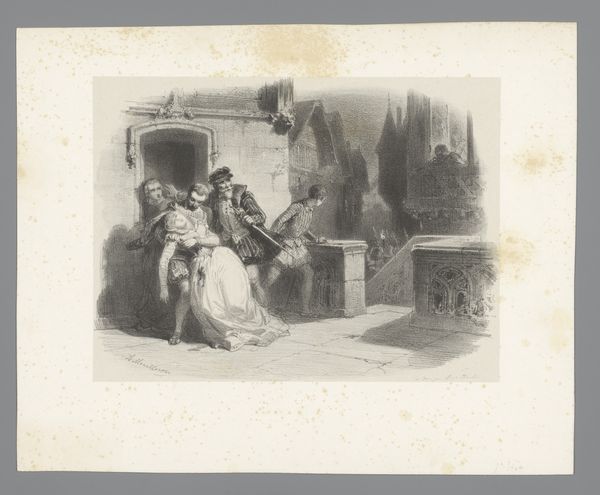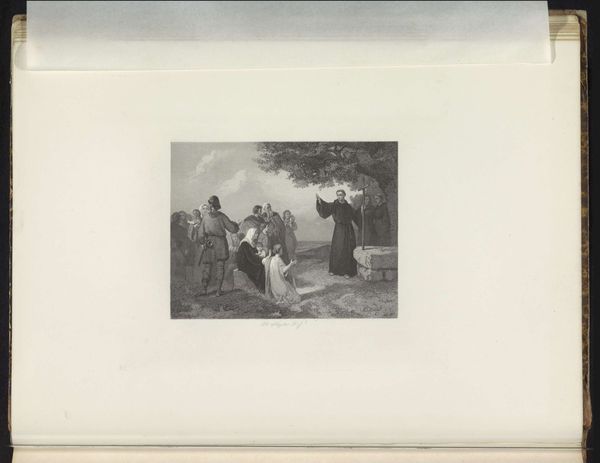
drawing, print, etching
#
drawing
# print
#
etching
#
landscape
#
genre-painting
Dimensions: height 375 mm, width 410 mm
Copyright: Rijks Museum: Open Domain
Editor: This etching by Adolphe Lalauze from 1874, titled "Cellist speelt voor vrouw in armstoel," depicts a genre scene. The texture achieved through the etching process gives it a rather formal, almost melancholic feel. How might you interpret this piece? Curator: As a materialist, I’m particularly drawn to understanding this work through its production. Consider the socio-economic implications embedded in the etching process. Etching allowed for the democratization of art, creating multiples available to a wider consuming public, relative to unique paintings for the wealthy elite. It makes me think about labor. What level of craft is involved, who produces the work, and who is able to buy this work, and consume it? Editor: That's fascinating. I hadn't thought about the accessibility aspect of etching in that way. Do the depicted figures provide insight into the labor relationships of that time? Curator: Potentially. The leisurely scene of musical entertainment for privileged patrons, is suggestive of economic divides. Look closely at the fabrics, the quality of the paper, the evidence of skill in transferring an image via print. All of these things point to hierarchies of production and consumption. Editor: I see your point. So the seemingly innocent depiction becomes a commentary on class structure through the very materials and process involved? Curator: Precisely. Etching, while technically reproducible, still demands skill and contributes to a system where artistic labor caters to specific social strata. By studying its means of production, from its laborious crafting process to its circulation as a commodity, the social structures of art consumption become very clear. What's your takeaway from all this? Editor: I now view this seemingly simple image as evidence of complex socioeconomic exchanges, and the dialogue between art, labor, and materials that define its meaning.
Comments
No comments
Be the first to comment and join the conversation on the ultimate creative platform.
